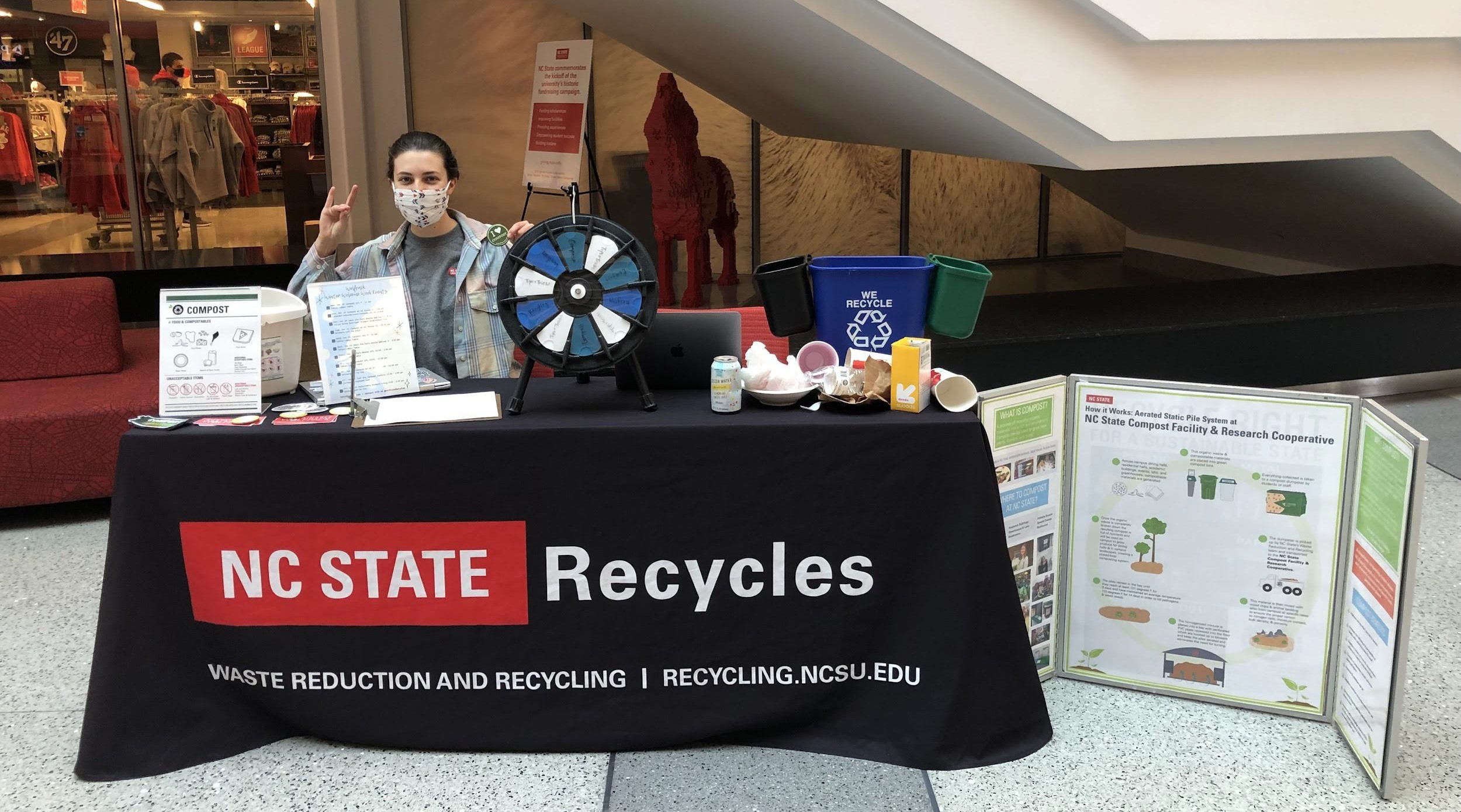Sara Bassett: Campus Sustainability through Composting

Did you know that dining hall food scraps at NC State can be recycled through State’s own composting facility and used to fertilize crops being grown for those same dining halls? I personally find this closed loop system so cool! While interning at NCSU’s composting facility and research cooperative, I had the wonderful opportunity to learn more about this process. A lot of people might associate compost with being messy or smelly, however, to me, compost is incredible!
Here’s a little background about how the facility functions as a sustainability solution.
Before NC State built its own facility, organic waste was still composted. It just had to be hauled all the way to another county which demanded time, money, and fuel for each trip. The university was simultaneously buying finished compost for various campus projects. In 2019, NC State’s new facility was able to replace both these steps as organic material from campus is now processed at this facility by NC State employees and is then reapplied both on campus and at the agroecology farm. Additionally, the facility functions as a carbon sink. This means that less stable forms of carbon, such as wood chips and animal bedding, are transformed into a more stable form in the finished products. Feed stocks currently include wood chips from local tree management companies, animal bedding from the vet school, post consumer food waste and compostable products from dining halls and campus buildings, and plant materials from the university greenhouses.
As an intern at the facility, part of my job is assisting with processing this material through several steps:
1.) Removing initial contamination items and then mixing the organics from campus with animal bedding and wood chips. In this step, we pay attention to moisture content, the carbon to nitrogen ratio, and the material’s bulk density to optimize aerobic decomposition.
2.) The mixture is then moved to static aerated piles. These are bays which include an air compressor and PVC pipe system to force air into the pile without needing to manually turn the pile. During the next few weeks, we will monitor temperature to meet Department of Environmental Quality standards. This ensures weed seeds and dangerous pathogens are eliminated.
3.) Next, the material is moved into long piles outside of the bays where it will continue to mature. This is another point in the process where we try to remove as much contamination as possible by pulling out anything which will not compost.
4.) Finally, after around 120 days, the material is sent through a large screener which removes any pieces over 3/8ths of an inch in size. Because a lot of this material is wood chips, it will be reused for other loads. All of the compost that is less than 3/8ths of an inch is our final product! It is picked up for use at the agroecology farm and for campus projects where it increases important nutrients in the soil.
I have definitely found some interesting contamination through my internship! I once found a bunch of hula hoops and some Christmas stockings. I am also surprised by the amount of clothing and shoes that ended up in our dumpsters; I could probably put together several outfits with all of it if I really wanted! There is even a fake hand Halloween decoration which is hanging in the facility office that definitely would have made me do a double take if I had been the one to find it. These are just a few examples, but clearly the campus needs to work on sorting waste a little!
This is one of the reasons I find the other part of my job particularly important. In addition to working at the facility, my position also encompasses campus outreach involvement to help provide educational information to the student body about the program. This includes helping with tours at the facility, leading volunteer groups, tabling at campus events, and making informative videos about how to compost on campus. I really enjoy this part of my job because I get to share my passion for environmental science with others. Plus, the more people who know how to correctly sort their waste, the less contamination that ends up at the facility! One fun group we had come out was a group of homeschoolers. They were able to start learning about composting long before college and hopefully we were able to spark a continued interest in both composting and sustainability.
The university system is somewhat unique in that we know where all of our source material is coming from so we can also make efforts to keep these sources low in contamination. This would be a lot harder at a larger scale, for instance, a city wide program. I believe that these types of programs can and should be implemented to contribute to a more sustainable future, however, contamination issues will need to be addressed. This internship has inspired me to think about ways I could be involved with this process. For instance, influencing policy around how waste is sorted and managed. I am planning to earn a minor in political science so I can better understand the systems in place and how they can be improved.
I am thankful for the professional experience I have gained through my job which will support me in making a difference in my community, whether that is here at NCSU or anywhere else I go! I hope that everyone at NC State with an interest in sustainability is able to take advantage of the university’s program